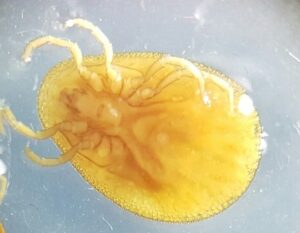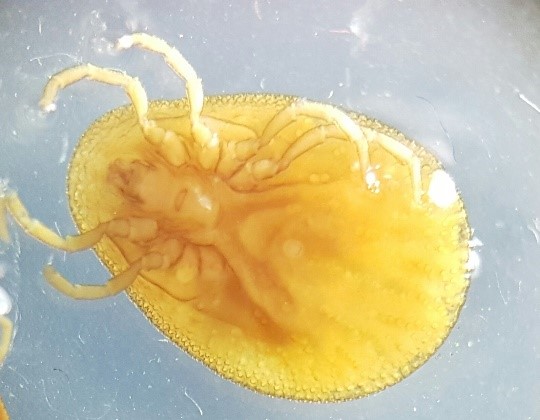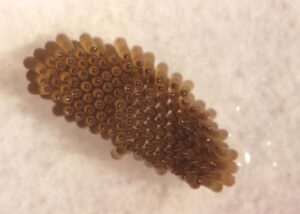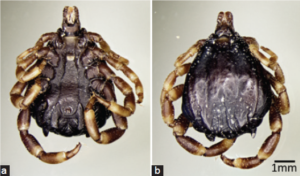Fowl Tick or Poultry Tick:
General Description
- Fowl ticks are light to dark red-brown (yellowish-brown when starved and slatey-blue when engorged).
- Adults are about 0.5-0.6 mm long.
- Mouthparts in nymphs and adults are not visible when viewed from above since they are hidden by the front margin of the tick’s body.
The skin is wrinkled.

Credit: CDC |

Soft Tick Credit: Navid Drogba |
Life Cycle and Common Characteristics
- Fowl ticks are found on an animal host, in cracks and crevices of buildings or in nests during the day and feed at night.
- These ticks are particularly active in poultry houses during warm, dry weather.
- Mating and laying eggs occur off the host and in sheltered areas such as bird nests.
- Eggs will hatch 10-30 days after being laid, depending on temperature and humidity within their habitat.
- Six-legged larvae hatch from the eggs in the selected sheltered area.
- Larvae begin to feed for a few hours to a few days after selecting the host.
- Larvae can be found on the birds because they remain attached and feed for 2–7 days.
- The larvae finish feeding and leaves the host and find a shelter.
- Nymphs and adults feed at night for 15–30 minutes.
- Nymphs feed and molt several times before reaching the adult stage.
- It has a multihost life cycle. This means that it has two or more nymphal stages that each require a blood meal.
- Adults feed repeatedly, most commonly under the wings, and the females lay from 50 to 500 eggs after each meal when off the hosts.
- Adult females may live more than 4 years without a blood meal.
Damage and Medical Implications
- Fowl ticks are usually associated with poultry production, but roaming ticks can also invade and infest homes and attempt to feed on people and pets.
- Adult and nymph fowl ticks most actively seek to feed at night and feed for only about 15-30 minutes before leaving their host and returning to their harborage site.
- Fowl ticks are carriers of the spirochete bacteria Borrelia anserinawhich causes avian spirochetosis, one of the most severe diseases affecting the poultry industry.
- Fowl tick infestation cause the following:
- Anemia, weight loss, drowsiness, depression, toxemia, and paralysis.
- loss of appetite
- Egg production decreases.
- Red spots can be seen on the skin where the ticks have fed.
- Death is rare, but production may be severely depressed.




